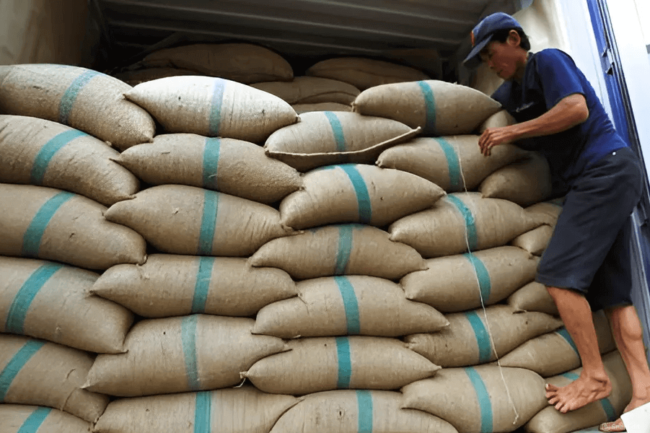Nông dân cà phê (coffee farmers) tại Tây nguyên (central highlands) đang chống chọi với hạn hán có thể làm giảm sản lượng cà phê trong các năm tới.
Các nhà khoa học (scientists) cho rằng hiện tượng thay đổi khí hậu (climate change) là nguyên nhân cho tình trạng lượng mưa (rainfall) không đều, thất thường (uneven) cắt giảm (cut/cutting) năng suất (yield) và nâng (lift/lifting) giá thành (cost) tại các nông trại (farms) cà phê.
Scientists say climate change is to blame for uneven rainfall that is cutting yields and lifting costs for coffee farms in the central highlands of Vietnam.
Khi lượng mưa giảm (decline) và tập trung (concentrate) chứ không rải đều như trước, nền nhiệt độ (temperatures) sẽ tăng (rise) – là điều kiện (conditions) lý tưởng (ideal) cho dịch bệnh (pests and diseases) làm hại (harming) cây và sản lượng cà phê.
While rainfall has declined and become concentrated, temperatures have risen – ideal conditions for pests and diseases harming coffee yields and trees.
Sử dụng (use) thuốc trừ dịch bệnh (pesticides), côn trùng (insecticides) và phân bón (fertilizers) tăng, thì đương nhiên giá thành tăng làm giá cà phê của Việt Nam giảm tính cạnh tranh (competitive)
Use of pesticides, insectisides and fertilizers has increased, and the rising costs are making Vietnamese coffee less competitive.
Hãy cùng đọc trọn bài bằng tiếng Anh được mô phỏng theo một bản tin của Reuters:
Scientists say climate change is to blame for uneven rainfall that is cutting yields and lifting costs for coffee farms in the central highlands of Vietnam.
While rainfall has declined and become concentrated, temperatures have risen – ideal conditions for pests and diseases harming coffee yields and trees.
Use of pesticides, insecticides and fertilizers has increased, and the rising costs are making Vietnamese coffee less competitive.
Nguyễn Quang Bình



Nông dân phải đối mặt với phân bón giả, thuốc giả, sâu & bệnh, hạn hán, giá thành sản xuất cao, đổi lại thì giá cafe sụt giảm.
Buồn cho nông dân.